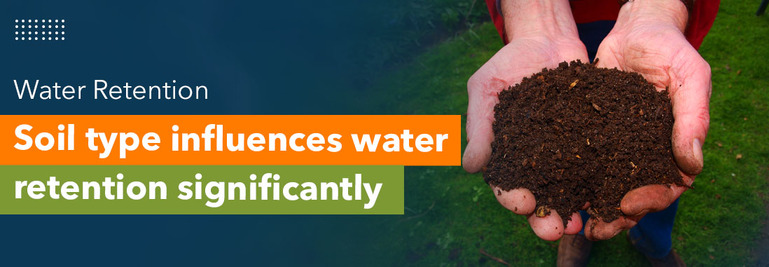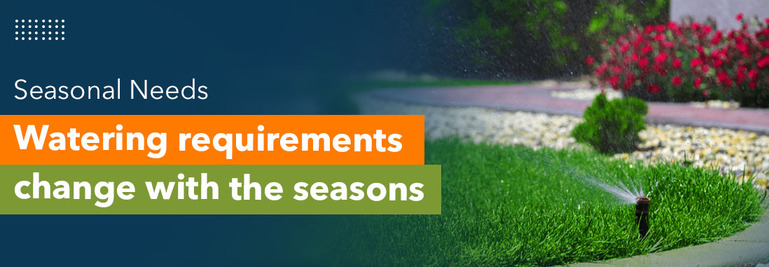Survey: 305 homeowners share how often they water their lawn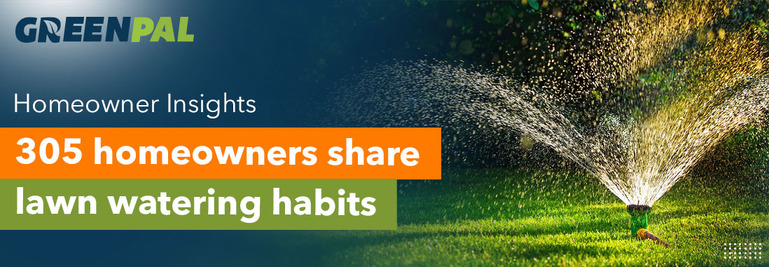
Striking the right balance when watering your lawn makes the difference between keeping it healthy and harming it. Not to mention, learning how often you should water your lawn helps manage your water bill.
Of course, watering is essential. It promotes root growth, preventing disease and keeping the lawn green. We asked 305 homeowners, "How often do you water your lawn?"
In addition to sharing survey insights, we'll also provide information about lawn watering practices.
Survey Results
Daily: 30 votes
2-3 times a week: 81 votes
Once a week: 93 votes
Every other week: 26 votes
Once a month: 15 votes
Only when necessary (e.g., during dry spells): 38 votes
Rely on rainfall/Don't Water: 22 votes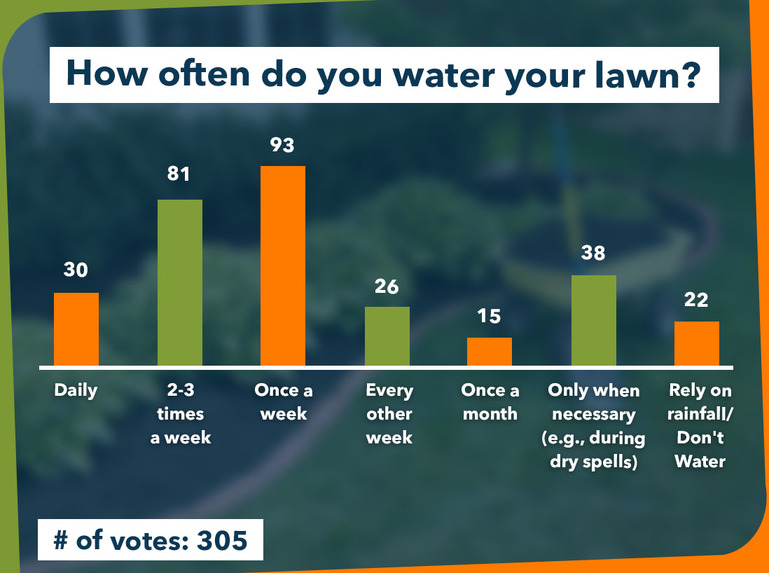
Lawn Watering Needs
Soil exhaustion, waterlogging, weather, and many other factors come into play when deciding your lawn's ideal watering needs.
While there are some general rules to follow, factors like whether you have clay or sandy soil means every homeowner must do their due diligence to determine their lawn's watering needs.
Here are some general guidelines to help homeowners keep their lawns healthy.
Grass type
Cool-season grasses (such as Kentucky bluegrass, fescue, and ryegrass) usually need more water than warm-season grasses (such as Bermuda, Zoysia, and St Augustine). According to the University of California, cool-season grasses may require about 20 percent more water than warm-season grasses. So, water around one to two times a week for cool-season grasses and less frequently for warm-season grasses.
Type of soil
![Hands holding rich soil, highlighting how soil type significantly influences water retention in lawns.]()
Soil type largely influences water retention. Silty soils are heavier than sand types and retain water well. Sandy soils have good drainage and must be watered more frequently.
"I live in central Florida. It's mostly sand. I'm watering every other day at least," one respondent said.
Clay soils have good water retention and must be watered less regularly. Homeowners with clay soils must also be careful to avoid waterlogging. Loamy soils (a mixture of sandy, silt, and clay) are the best due to their perfect draining ability and their strong water retention.
Climate
Lawns in regions with arid and hot climates might benefit from more frequent watering. Cooler and humid climates with less evaporation may get by with less frequent watering.
Some survey respondents noted their decision was affected by climate and drought conditions.
One respondent wrote, "We can only water twice weekly on predesignated days, and you can get a ticket for it if you water outside of those days."
Changes with the season
![Lawn sprinkler operating near a flower bed with text noting that watering needs vary with the seasons.]()
Water needs also fluctuate with the seasons, usually requiring less water in the spring and fall when temperatures tend to be cooler, and there is more rainfall. However, summer weather is often hotter and drier, and more frequent watering might be encouraged to prevent heat stress. Remember that watering tactics and requirements may change during such events as droughts
According to Aaron Patton, a Purdue Extension turfgrass specialist, homeowners can water regularly to avoid drought stress or let their lawn go dormant and water only occasionally to help it survive.
A few respondents in wetter parts of the country mentioned they don't water at all and strictly rely on rainfall — all this to confirm that what works best for one won't apply to another.
Best Practices for Watering Your Lawn
Watering deeply encourages the roots to grow deeper into the soil, which results in a more drought-resistant lawn. Most lawns need about an inch of water weekly to stay in top shape.
Watering early in the morning is best. Watering between 6 and 10 a.m. works well. Later in the day, water evaporates more quickly as the sun starts cookin'. Adjust your watering schedule according to the weather. After heavy rainfall, decrease your watering and resume a regular schedule once the lawn dries out.
Use drip irrigation, soaker hoses, or sprinkler systems to ensure equal water distribution. Use systems and watering equipment that disperses water low to the ground. The higher the water is thrown in the air, the less likely it is to penetrate as deeply as needed. Check soil moisture to avoid over or underwatering. One common way to check if your lawn is saturated enough is to use the screwdriver test: insert a screwdriver or nail into a six- to eight-inch section of soil. The soil still has plenty of moisture if it easily inserts that far.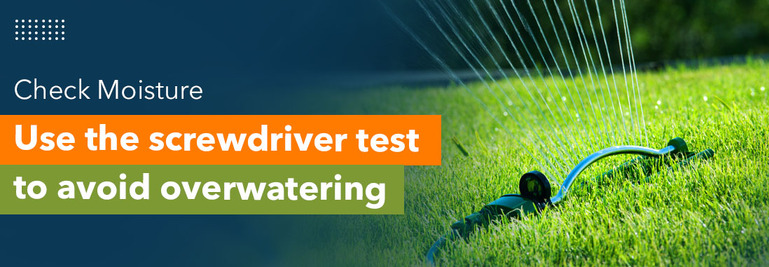
Place mulch around plants and garden beds to add organic matter to the soil, retain moisture by reducing evaporation, and provide a more constant soil temperature; use it in lawns to keep the soil cooler and reduce watering.
Quick Overview
Frequency |
Votes |
Percentage |
Insights |
Daily |
30 |
9.8% |
Common in sandy soils or extremely hot climates. |
2-3 times a week |
81 |
26.6% |
Balances water needs for many grass types and climates. |
Once a week |
93 |
30.5% |
Most popular; suits many cool-season grasses and moderate climates. |
Every other week |
26 |
8.5% |
Suitable for regions with consistent rainfall or less thirsty lawns. |
Once a month |
15 |
4.9% |
Adequate in rainy or very cool climates, or for dormant lawns. |
Only when necessary |
38 |
12.5% |
Indicates a water-conservative approach or reliance on natural precipitation during dry spells. |
Rely on rainfall/Don't Water |
22 |
7.2% |
Suitable for regions with ample natural rainfall. |
There is no easy answer to how often you should water your lawn. Watering your lawn may be a frequent or rare occasion based on the soil type, climate, and grass you have.
Each homeowner should take into account their lawn's unique needs. Watering must be done well to ensure a yard is healthy.
From the results of our survey, the largest number of respondents (93 votes) said they water their lawns once a week. The least number of voters (15 votes) said they water their yard once a month — everyone else fell somewhere in between. 





 Share
Share




